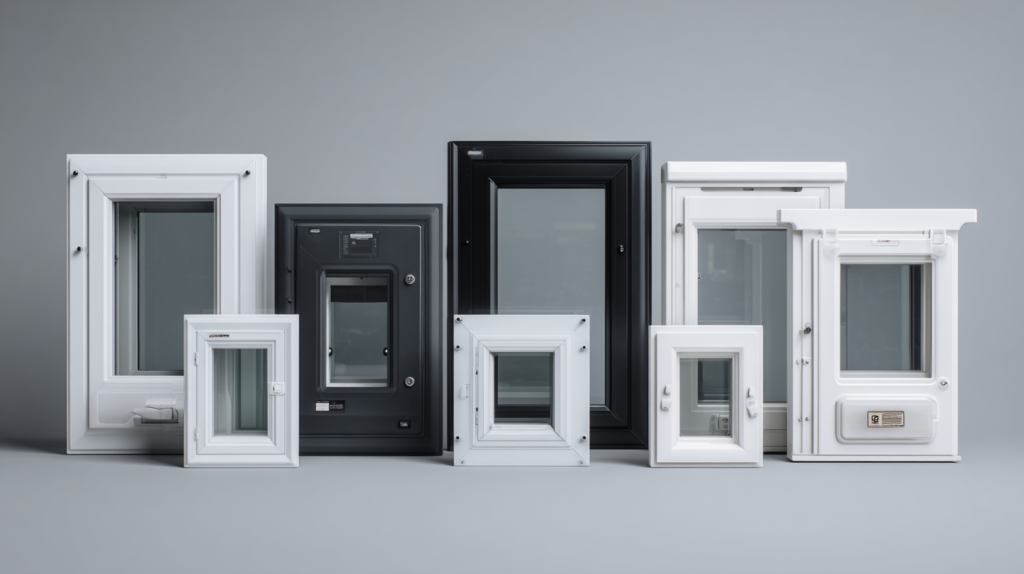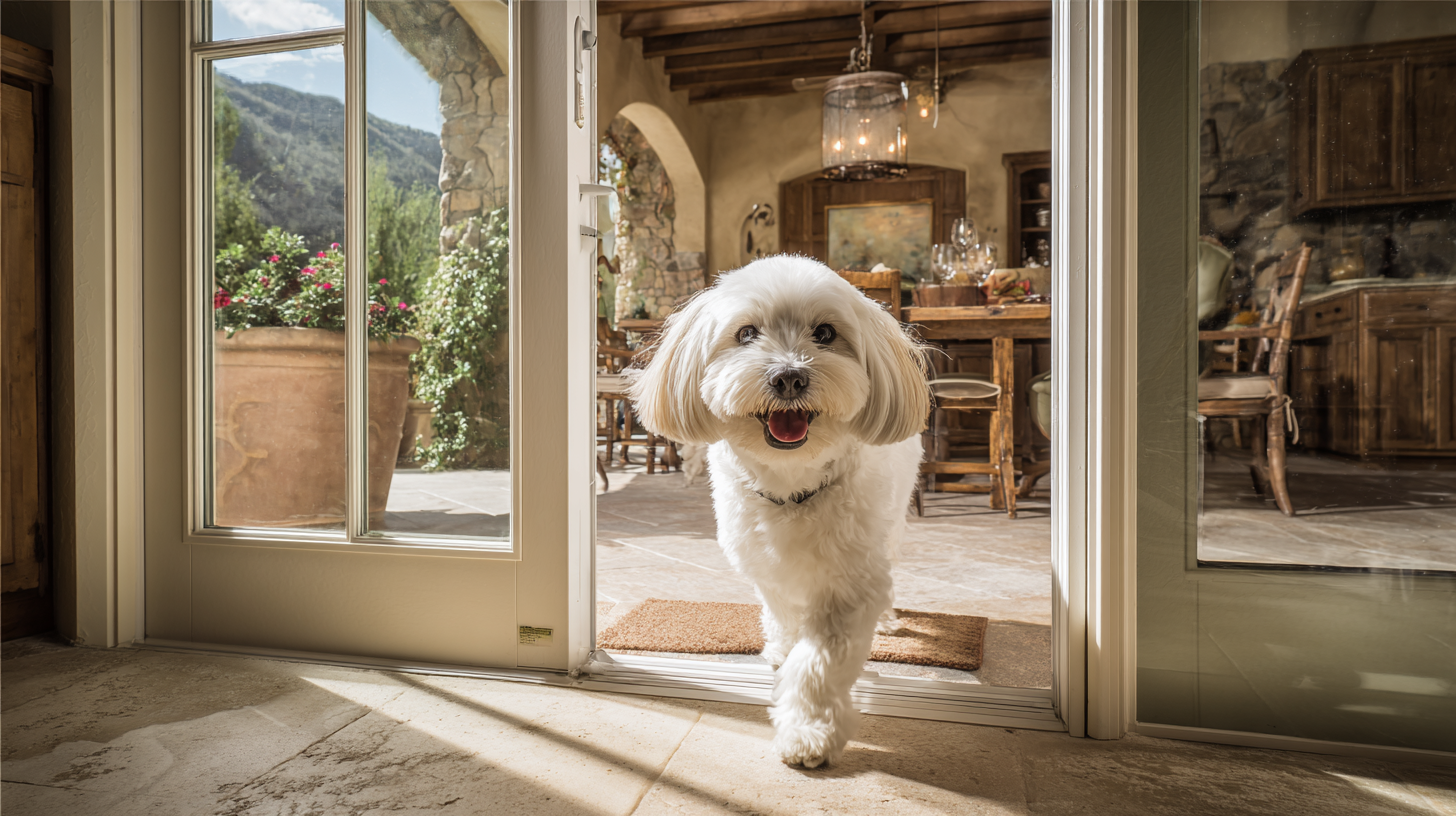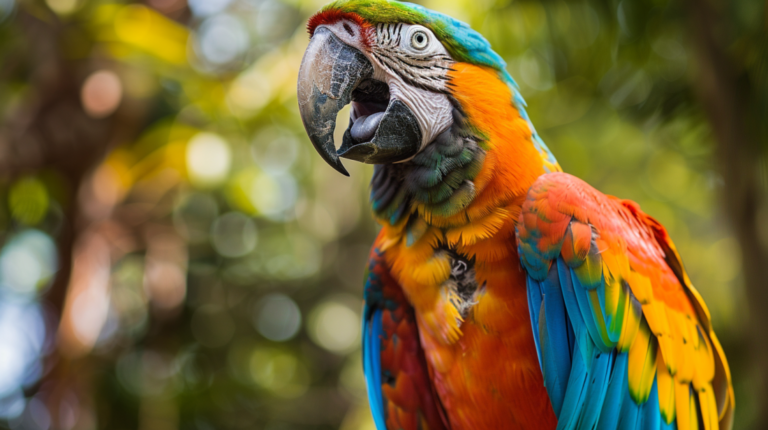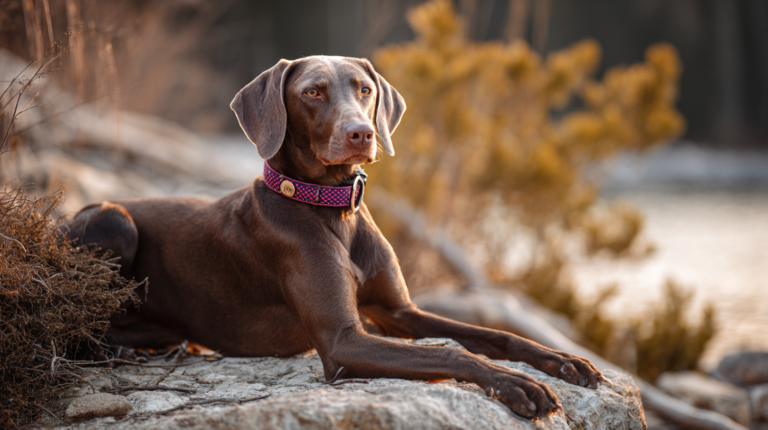Discover the 7 best dog doors for easy access. Compare features, sizes, and security options to find the perfect dog door for your pet’s needs and home setup.
Table of Contents
Did you know that 68% of dog owners struggle with letting their pets in and out multiple times throughout the day? Installing a quality dog door can transform your daily routine while giving your furry friend the freedom they crave. Whether you’re dealing with a puppy who needs frequent bathroom breaks or an active adult dog who loves exploring the backyard, the right dog door can be a game-changer for both you and your pet.
A dog door isn’t just a convenience—it’s an investment in your dog’s independence and your peace of mind. From traditional flap-style doors to high-tech electronic models, today’s market offers solutions for every home, budget, and security concern. This comprehensive guide will walk you through the seven best dog doors available, helping you make an informed decision that suits your specific needs while ensuring your pet’s safety and comfort.
Why Every Dog Owner Should Consider a Dog Door

Installing a dog door offers numerous benefits that extend far beyond simple convenience. For busy pet owners, a dog door eliminates the constant interruption of letting pets in and out, allowing you to focus on work, family time, or household tasks without neglecting your dog’s needs. This is particularly valuable for households with multiple pets or dogs that require frequent outdoor access.
From a behavioral perspective, dog doors promote better mental health in pets by providing them with choice and control over their environment. Dogs naturally prefer having options, and the ability to move freely between indoor and outdoor spaces can reduce anxiety, destructive behavior, and excessive barking. This freedom is especially beneficial for high-energy breeds that need regular outdoor stimulation.
The health benefits are equally important. Dogs with access to a dog door are less likely to experience urinary tract infections or digestive issues caused by “holding it” for extended periods. Senior dogs with arthritis or mobility issues particularly benefit from being able to access the outdoors at their own pace, without having to wait for assistance.
The 7 Best Dog Doors for Easy Access
1. PetSafe Extreme Weather Pet Door
The PetSafe Extreme Weather Pet Door tops our list for its exceptional durability and all-weather performance. This door features a dual-flap system with weather stripping that creates an effective barrier against harsh weather conditions, making it ideal for climates with extreme temperatures.
Key Features:
- Dual-flap design with magnetic closure
- Weather-resistant aluminum frame
- Available in four sizes (small to extra-large)
- Easy installation with included template
- Telescoping tunnel accommodates walls up to 2 inches thick
Best For: Homes in areas with severe weather conditions, dogs of all sizes, and owners prioritizing energy efficiency.
Real-World Performance: According to user reviews, this door reduces energy costs by up to 15% compared to standard pet doors, thanks to its superior insulation properties.
2. Ideal Pet Products Designer Series Ruff-Weather Door
The Designer Series Ruff-Weather Door combines functionality with aesthetic appeal, making it perfect for homeowners who don’t want to compromise on their home’s appearance. This door features a paintable frame that can be customized to match your home’s exterior.
Key Features:
- Paintable polymer frame
- Dual-flap system with weather sealing
- Self-closing magnetic flaps
- Available in three sizes
- 15-year manufacturer warranty
Best For: Design-conscious homeowners, moderate climates, and medium to large dogs.
Expert Tip: Professional contractors recommend this model for its balance of performance and aesthetics, particularly in upscale neighborhoods where appearance matters.
3. SureFlap Microchip Pet Door
For pet owners concerned about security and unwanted animal visitors, the SureFlap Microchip Pet Door offers cutting-edge technology. This electronic door reads your dog’s microchip and only allows authorized pets to enter, keeping out stray animals and potential threats.
Key Features:
- Microchip recognition technology
- Battery-powered operation (6-month battery life)
- Weatherproof design
- Curfew mode for nighttime security
- Works with existing pet microchips
Best For: Multi-pet households, urban environments with stray animals, and security-conscious owners.
Case Study: Sarah from Denver installed this door after repeatedly finding raccoons in her kitchen. Since installation, she’s had zero unwanted animal intrusions while her two dogs maintain full access.
4. Endura Flap Pet Door
The Endura Flap Pet Door is engineered for extreme durability and weather resistance. Its unique flap design prevents cracking and warping, even in temperatures ranging from -40°F to 150°F.
Key Features:
- Endura Flap technology (won’t crack or warp)
- Heavy-duty aluminum frame
- Adjustable magnetic hold-down system
- Available in 13 sizes
- Made in the USA
Best For: Extreme weather conditions, large or powerful dogs, and long-term durability needs.
Performance Data: Independent testing shows this door maintains its seal integrity for over 10 years, compared to 3-4 years for standard pet doors.
5. PetSafe Electronic SmartDoor
The PetSafe Electronic SmartDoor uses a special collar key to grant access, offering security without requiring a microchip. This programmable door can accommodate multiple pets and includes customizable settings for different access levels.
Key Features:
- Programmable collar key system
- Accommodates up to 5 pets
- Selective entry/exit control
- Low-battery indicator
- Weather-resistant design
Best For: Households with multiple pets, renters who can’t microchip pets, and owners wanting flexible access control.
User Experience: Pet owners report that dogs typically adapt to the collar key system within 2-3 days, making it an excellent choice for tech-savvy households.
6. Plexidor Wall Mount Pet Door
The Plexidor Wall Mount Pet Door is designed for permanent installation in walls, offering superior insulation and security. Its saloon-style doors provide excellent weather protection while maintaining ease of use.
Key Features:
- Saloon-style double doors
- Aluminum frame construction
- Superior insulation properties
- Lockable for security
- Available in multiple sizes and colors
Best For: Permanent installations, energy-conscious homeowners, and areas requiring maximum security.
Installation Note: While this door requires more extensive installation, professional contractors report it provides the best long-term performance and energy efficiency.
7. Namsan 4-Way Locking Pet Door
The Namsan 4-Way Locking Pet Door offers excellent value while providing essential security features. Its four-way locking system allows you to control when your pet can enter, exit, or stay locked inside or outside.
Key Features:
- 4-way locking system
- Silent magnetic closure
- Easy installation
- Weatherproof design
- Budget-friendly pricing
Best For: Budget-conscious pet owners, apartment dwellers, and those needing basic security features.
Value Assessment: At roughly half the cost of premium models, this door provides 80% of the functionality, making it ideal for first-time dog door users.
Essential Factors to Consider When Choosing a Dog Door
Size and Breed Considerations
Selecting the correct size is crucial for your dog’s comfort and the door’s effectiveness. Measure your dog’s height from the ground to the top of their shoulders, then add 2-3 inches for comfortable clearance. The door’s width should be at least 2 inches wider than your dog’s broadest point.
Size Guidelines:
- Small dogs (up to 25 lbs): 6″ x 7″ to 8″ x 10″
- Medium dogs (25-60 lbs): 8″ x 10″ to 10″ x 12″
- Large dogs (60-100 lbs): 10″ x 12″ to 15″ x 20″
- Extra-large dogs (100+ lbs): 15″ x 20″ and larger
Consider your dog’s growth potential, especially for puppies. It’s often more cost-effective to buy a slightly larger door initially rather than replacing it as your dog grows.
Security and Weather Protection
Modern dog doors incorporate various security features to address common concerns about home safety. Look for doors with locking mechanisms, reinforced frames, and tamper-resistant designs. Some models include sliding panels that completely seal the opening when not in use.
Weather protection is equally important. Quality doors feature multiple seals, magnetic closures, and insulated flaps to prevent drafts, moisture, and temperature transfer. In extreme climates, consider doors with dual-flap systems or additional insulation features.
Installation Requirements and Considerations
Installation complexity varies significantly between models. Basic door installations can be completed in 30-60 minutes with basic tools, while wall-mounted or electronic doors may require professional installation. Consider your skill level, available tools, and whether you’re installing in a door, wall, or window.
Before Installation:
- Check local building codes and HOA restrictions
- Measure twice to ensure proper fit
- Consider the door’s swing direction
- Plan for electrical requirements (electronic models)
- Assess structural integrity of installation location
Training Your Dog to Use Their New Door
Step-by-Step Training Process
Successfully introducing your dog to their new door requires patience and positive reinforcement. Start by propping the flap open and encouraging your dog to walk through using treats and praise. Most dogs adapt within 3-7 days with consistent training.
Week 1 Training Schedule:
- Days 1-2: Flap completely open, encourage walking through
- Days 3-4: Partially lower flap, continue positive reinforcement
- Days 5-7: Allow flap to close naturally, reward successful use
Training Tips:
- Use high-value treats your dog loves
- Practice during regular potty break times
- Never force your dog through the door
- Celebrate small victories with enthusiasm
- Consider training sessions of 5-10 minutes multiple times daily
Common Training Challenges and Solutions
Some dogs may initially fear the flap or be confused by the concept. Address these concerns by making the experience as positive as possible. For anxious dogs, consider leaving the flap open for several days before beginning formal training.
Troubleshooting Common Issues:
- Flap fear: Use clear tape to hold flap open initially
- Size confusion: Ensure the door is appropriately sized
- Noise sensitivity: Look for silent-closing models
- Directional confusion: Practice both entry and exit
- Weather reluctance: Start training in pleasant conditions
Maintenance and Longevity Tips
Regular Maintenance Schedule
Proper maintenance extends your dog door’s lifespan and ensures optimal performance. Establish a monthly inspection routine to check for wear, damage, or alignment issues.
Monthly Maintenance Checklist:
- Clean flap and frame with mild soap and water
- Check magnetic closure alignment
- Inspect weather seals for damage
- Test locking mechanisms
- Lubricate hinges if needed
- Remove debris from tracks or tunnels
Seasonal Care Considerations
Different seasons present unique challenges for dog doors. Winter maintenance focuses on preventing ice buildup and maintaining seals, while summer care emphasizes ventilation and cooling.
Winter Care:
- Apply silicone spray to prevent freezing
- Check for ice buildup around seals
- Ensure proper insulation performance
- Monitor for drafts or gaps
Summer Care:
- Clean more frequently due to increased use
- Check for UV damage to plastic components
- Ensure proper ventilation
- Monitor for pest intrusion
When to Consult a Professional
While many dog door installations are DIY-friendly, certain situations require professional assistance. Contact a contractor for installations involving structural modifications, electrical work, or complex security systems.
Professional Installation Recommended For:
- Wall-mounted doors requiring structural cutting
- Electronic doors with complex wiring
- Installations in load-bearing walls
- Security doors with advanced locking systems
- Situations involving building code compliance
Warning Signs Requiring Professional Help:
- Persistent air leaks despite proper installation
- Structural damage during installation
- Electrical issues with electronic models
- Recurring alignment problems
- Security concerns with installation quality
Common Mistakes to Avoid
Sizing Errors
The most common mistake is choosing the wrong size door. Too small, and your dog won’t use it comfortably; too large, and you compromise security and energy efficiency. Always measure your dog multiple times and consider their growth potential.
Poor Installation Location
Avoid installing doors in areas with extreme temperature differences, high traffic zones, or locations that compromise home security. Consider your dog’s natural path to the outdoors and choose locations that feel natural to them.
Neglecting Training
Rushing the training process or using negative reinforcement can create long-term fear or avoidance. Invest time in proper training for the best long-term results.
Myth-Busting: Common Dog Door Misconceptions
Myth 1: “Dog doors make homes less secure”
Reality: Modern dog doors incorporate multiple security features including locking mechanisms, reinforced frames, and access control systems. When properly installed and maintained, they don’t significantly impact home security.
Myth 2: “Dog doors cause major energy loss”
Reality: Quality dog doors with proper sealing actually cause minimal energy loss. Studies show well-installed doors typically result in less than 2% increase in energy costs.
Myth 3: “All dog doors are basically the same”
Reality: Significant differences exist in materials, construction, features, and durability. Investing in quality pays dividends in performance and longevity.
Advanced Features and Technology
Smart Home Integration
Modern dog doors increasingly integrate with smart home systems, allowing remote monitoring and control. Some models send notifications when your pet uses the door, helping you track their activity patterns.
Smart Features to Consider:
- Mobile app connectivity
- Activity tracking and analytics
- Remote locking capabilities
- Integration with home security systems
- Automated scheduling features
Health and Behavior Monitoring
Advanced doors can provide insights into your dog’s health and behavior patterns. Sudden changes in door usage might indicate health issues, making these features valuable for proactive pet care.
Cost-Benefit Analysis
Initial Investment vs. Long-Term Savings
While quality dog doors require a significant initial investment ($150-$800), they provide substantial long-term benefits. Consider the value of your time, reduced energy costs, and improved pet health when evaluating options.
Cost Comparison Example:
- Professional dog walker: $20/day x 365 days = $7,300/year
- Quality dog door: $400 one-time investment
- Annual maintenance: $50
- 10-year savings: Over $70,000
Return on Investment Factors
Beyond monetary savings, consider the improved quality of life for both you and your pet. Reduced stress, better pet behavior, and increased convenience all contribute to the door’s value proposition.
Environmental Impact and Sustainability
Energy Efficiency Considerations
Modern dog doors significantly reduce energy waste compared to frequently opened human doors. Look for Energy Star qualified models and those with superior insulation ratings.
Sustainable Material Options
Many manufacturers now offer doors made from recycled materials or sustainable alternatives. Consider the environmental impact of your choice, especially for long-term installations.
| Dog Door Model | Price Range | Best For | Key Features | Weather Rating | Security Level |
|---|---|---|---|---|---|
| PetSafe Extreme Weather | $150-$250 | All climates | Dual-flap, magnetic closure | Excellent | Medium |
| Ideal Pet Designer Series | $120-$200 | Moderate climates | Paintable frame, 15-year warranty | Good | Medium |
| SureFlap Microchip | $180-$300 | Multi-pet homes | Microchip recognition, curfew mode | Good | High |
| Endura Flap | $200-$400 | Extreme weather | Won’t crack/warp, 13 sizes | Excellent | High |
| PetSafe SmartDoor | $250-$350 | Tech-savvy owners | Programmable, 5-pet capacity | Good | High |
| Plexidor Wall Mount | $300-$500 | Permanent installation | Saloon doors, superior insulation | Excellent | Very High |
| Namsan 4-Way Locking | $50-$100 | Budget-conscious | 4-way locking, silent closure | Fair | Medium |
FAQ Section :
Q: What size dog door do I need for my pet?
A: Measure your dog’s height from ground to shoulder and add 2-3 inches for clearance. The door width should be at least 2 inches wider than your dog’s broadest point. For growing puppies, consider sizing up to accommodate future growth.
Q: How long does it take to train a dog to use a pet door?
A: Most dogs adapt to using a dog door within 3-7 days with consistent positive reinforcement training. Start with the flap propped open and gradually introduce the closing mechanism. Patience and treats are key to successful training.
Q: Are dog doors secure and safe for my home?
A: Modern dog doors incorporate multiple security features including locking mechanisms, reinforced frames, and access control systems. When properly installed, they don’t significantly compromise home security. Look for models with tamper-resistant designs and locking capabilities.
Q: Can dog doors help with energy efficiency?
A: Quality dog doors with proper sealing cause minimal energy loss, typically less than 2% increase in energy costs. Many doors feature weather stripping, magnetic closures, and insulated flaps that actually prevent more energy loss than frequently opened human doors.
Q: What’s the difference between microchip and collar key dog doors?
A: Microchip doors read your pet’s existing identification chip for access, while collar key doors require a special collar device. Microchip doors are more convenient (no collar needed) but collar key doors allow for multiple pets and don’t require prior microchipping.
Q: How do I maintain my dog door for longevity?
A: Perform monthly inspections including cleaning the flap and frame, checking magnetic closure alignment, inspecting weather seals, and testing locking mechanisms. Seasonal maintenance includes preventing ice buildup in winter and checking for UV damage in summer.
Q: When should I replace my dog door?
A: Replace your dog door when you notice persistent air leaks, damaged seals that can’t be repaired, broken locking mechanisms, or if your dog’s size has significantly changed. Quality doors typically last 7-10 years with proper maintenance.
Conclusion
Choosing the right dog door transforms your pet’s daily experience while providing you with convenience and peace of mind. Whether you opt for the weather-resistant PetSafe Extreme Weather model, the high-tech SureFlap Microchip door, or the budget-friendly Namsan 4-Way option, the key is matching the door’s features to your specific needs.
Remember that the best dog door is one that your pet will actually use. Consider your dog’s size, temperament, and habits when making your selection. Invest in quality installation and take time for proper training to ensure long-term success.
The right dog door isn’t just a purchase—it’s an investment in your dog’s independence and your household’s harmony. Take time to evaluate your options, and don’t hesitate to consult with professionals when needed. Your furry friend will thank you for the freedom, and you’ll appreciate the convenience for years to come.
For more expert pet care tips and product recommendations, visit BlithePet.com your trusted source for pet wellness.
Have a similar experience with your pet? Share it in the comments below! Don’t forget to check out our other helpful guides at BlithePet.com







